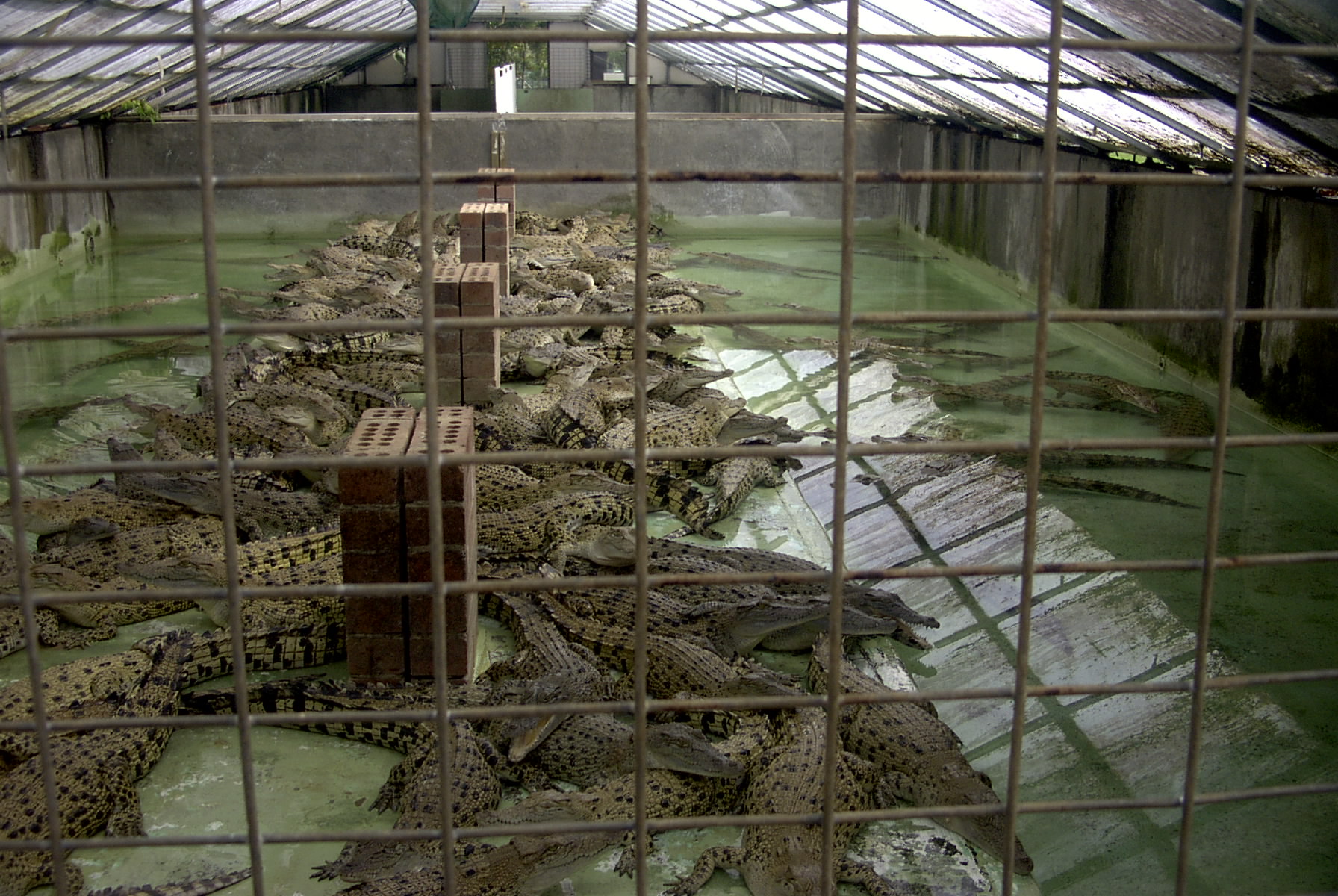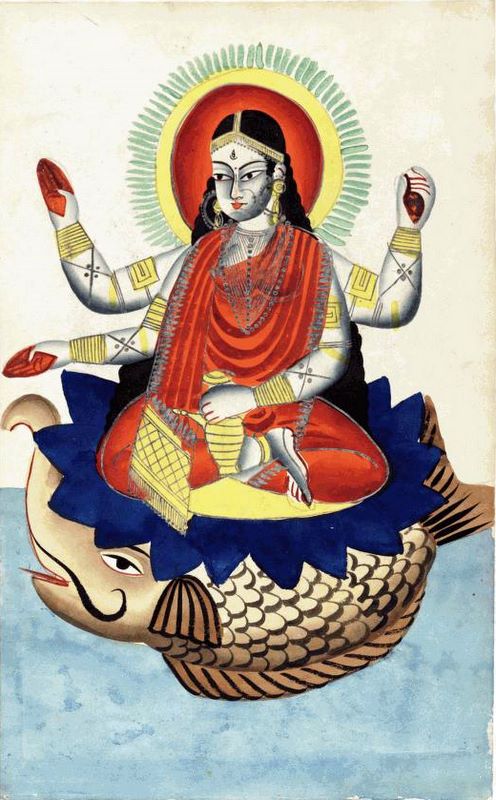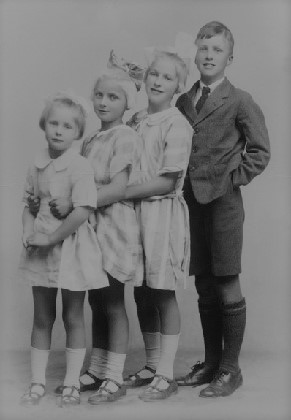|
List Of Fictional Crocodiles And Alligators
This is a list of fictional crocodiles and alligators from literature, mascots and emblems of teams and organizations, comics, films, animations and video games. This list is subsidiary to the list of fictional animals. It is restricted to notable crocodilian characters from notable works of fiction. Characters that appear in multiple media may have separate listings for each appearance, while in instances where a character has appeared in several separate works in a single medium, only the earliest will be recorded here. Literature Folklore and myths Mascots and emblems Crocodiles and alligators are used as mascots and emblems by organisations and sports teams: * Albert and Alberta Gator of the Florida Gators, representing the University of Florida The University of Florida (Florida or UF) is a public university, public land-grant university, land-grant research university in Gainesville, Florida, United States. It is a senior member of the State University System of ... [...More Info...] [...Related Items...] OR: [Wikipedia] [Google] [Baidu] |
Crocodile
Crocodiles (family (biology), family Crocodylidae) or true crocodiles are large, semiaquatic reptiles that live throughout the tropics in Africa, Asia, the Americas and Australia. The term "crocodile" is sometimes used more loosely to include all extant taxon, extant members of the order (biology), order Crocodilia, which includes the alligators and caimans (both members of the family Alligatoridae), the gharial and false gharial (both members of the family Gavialidae) as well as other extinct Taxon, taxa. Crocodile Measurement, size, Morphology (biology), morphology, behaviour and ecology differ among species. However, they have many similarities in these areas as well. All crocodiles are semiaquatic and tend to congregate in freshwater habitats such as rivers, lakes, wetlands and sometimes in brackish water and Seawater, saltwater. They are carnivorous animals, feeding mostly on vertebrates such as fish, reptiles, birds and mammals, and sometimes on invertebrates such as mol ... [...More Info...] [...Related Items...] OR: [Wikipedia] [Google] [Baidu] |
Eduard Uspensky
Eduard Nikolayevich Uspensky (; 22 December 193714 August 2018) was a Soviet and Russian children's writer and poet, author of over 70 books, as well as a playwright, screenwriter and TV presenter. His works have been translated into 25 languages and spawned around 60 cartoon adaptations. Among the characters he created are Cheburashka and Gena the Crocodile, Uncle Fyodor and Kolobki brothers. He was awarded Order "For Merit to the Fatherland", 4th class in 1997. Biography Uspensky was born in Yegoryevsk, in Moscow Oblast into a Russian family. His father Nikolai Mikhailovich Uspensky came from the city of Yelets and was a distant relative of Tikhon Khrennikov. He served as a high-ranking official in the Central Committee of the Communist Party of the Soviet Union. Eduard's mother Natalia Alekseyevna Uspenskaya (''nee'' Dzurova) was an engineering technologist from Vyshny Volochyok. She came from a merchantry social estate. Her paternal ancestors were Poles who were resettled i ... [...More Info...] [...Related Items...] OR: [Wikipedia] [Google] [Baidu] |
Sobek
Sobek (), also known as Suchus (), was an ancient Egyptian deities, ancient Egyptian deity with a complex and elastic history and nature. He is associated with the Nile crocodile and is often represented as a crocodile-headed humanoid, if not as a crocodile outright. Sobek was also associated with pharaonic power, fertility, and military prowess, but served additionally as a protective deity with apotropaic magic, apotropaic qualities, invoked especially for protecting others from the dangers presented by the Nile. History Sobek enjoyed a longstanding presence in the ancient Egyptian pantheon, from the Old Kingdom of Egypt (c. 2686–2181 BCE) through the Roman period (). He is first known from several different Pyramid Texts of the Old Kingdom, particularly from spell PT 317. The spell, which praises the pharaoh as the living incarnation of the Nile crocodile, crocodile god, reads: The origin of his name, ''Sbk''WB IV, 95. in Egyptian language, Egyptian, is debated among scho ... [...More Info...] [...Related Items...] OR: [Wikipedia] [Google] [Baidu] |
India
India, officially the Republic of India, is a country in South Asia. It is the List of countries and dependencies by area, seventh-largest country by area; the List of countries by population (United Nations), most populous country since 2023; and, since its independence in 1947, the world's most populous democracy. Bounded by the Indian Ocean on the south, the Arabian Sea on the southwest, and the Bay of Bengal on the southeast, it shares land borders with Pakistan to the west; China, Nepal, and Bhutan to the north; and Bangladesh and Myanmar to the east. In the Indian Ocean, India is near Sri Lanka and the Maldives; its Andaman and Nicobar Islands share a maritime border with Thailand, Myanmar, and Indonesia. Modern humans arrived on the Indian subcontinent from Africa no later than 55,000 years ago., "Y-Chromosome and Mt-DNA data support the colonization of South Asia by modern humans originating in Africa. ... Coalescence dates for most non-European populations averag ... [...More Info...] [...Related Items...] OR: [Wikipedia] [Google] [Baidu] |
Makara
Makara () is a legendary sea-creature in Hindu mythology. In Hindu astrology, Makara is equivalent to the Zodiac sign Capricorn. Makara appears as the vahana (vehicle) of the river goddess Ganga, Narmada, and of the god of the ocean, Varuna. Makara are considered guardians of gateways and thresholds, protecting throne rooms as well as entryways to temples; it is the most commonly recurring creature in Hindu and Buddhist temple iconography, and also frequently appears as a gargoyle or as a spout attached to a natural spring. Makara-shaped earrings called ''Makarakundalas'' are sometimes worn by Hindu deities, for example Shiva, Vishnu, Surya, and Chandi. Makara is also the insignia of the love god Kamadeva, who has no dedicated temples and is also known as ''Makaradhvaja'', "one whose flag depicts a makara". Etymology ''Makara'' is a Sanskrit word which means "sea-animal, crocodile". Several German scientists argued that makara is based on the dugong instead, based on rea ... [...More Info...] [...Related Items...] OR: [Wikipedia] [Google] [Baidu] |
Catherine Rayner
Catherine Rayner (born 1982) is an Edinburgh-based British illustrator and writer of children's books. She was born in Harrogate and grew up in Boston Spa, later studying at Leeds College of Art and Edinburgh College of Art. She won the Kate Greenaway Medal in 2009 for ''Harris Finds his Feet'', and has been shortlisted in 2007, 2011, 2012, 2015. In 2014, ''Norris, The Bear Who Shared'' was named by The Sunday Times as one of the 100 Children's Modern Classics of the past ten years. Works Writer and illustrator * ''Augustus and his Smile'', Little Tiger Press, 2006 * ''Harris Finds his Feet'', Little Tiger Press, 2008 * '' Sylvia and Bird'', Little Tiger Press, 2009 * ''Ernest'', Macmillan Children’s Books, 2009 * ''Norris, The Bear who Shared'', Orchard Books, 2010 * ''Iris and Isaac'', Little Tiger Press, 2010 * '' Solomon Crocodile'', Macmillan Children’s Books, 2011 * ''Abigail'', Little Tiger Press, 2013 * ''Smelly Louie'', Macmillan Children’s Books, 2014 * ... [...More Info...] [...Related Items...] OR: [Wikipedia] [Google] [Baidu] |
Solomon Crocodile
''Solomon Crocodile'' is a 2011 picture book by Catherine Rayner. It is about a mischievous crocodile called Solomon who wants to play with various birds and animals but just annoys them until he finally meets another playful crocodile. Reception Booktrust, in a review of ''Solomon Crocodile'', wrote that "Catherine Rayner's lovely artwork vividly depicts a lively cast of animal characters in this gorgeous picture book," found similarities between the book's illustrations and those of Quentin Blake, and concluded, "this is a picture book to treasure." The Scottish Book Trust called it a "beautifully illustrated picture book," while ''The Horn Book Magazine'' and a King County librarian recommended it for storytime. ''Solomon Crocodile'' has also been reviewed by ''Kirkus Reviews'', ''Books for Keeps'', ''Publishers Weekly'', AARP, ''Booklist'', and ''School Library Journal''. Awards * 2012 Kate Greenaway Medal The Carnegie Medal for Illustration (until 2022 the Kate Greenawa ... [...More Info...] [...Related Items...] OR: [Wikipedia] [Google] [Baidu] |
Bernard Waber
Bernard Waber (September 27, 1921 – May 16, 2013) was an American children's author most famous for the books ''The House on East 88th Street'' (1962), ''Lyle, Lyle, Crocodile'' (1965) and the subsequent books in the ''Lyle'' series. Background He was born in Philadelphia, Pennsylvania to Henry and Pauline Waber. Although he started a degree in finance at the University of Pennsylvania, he left school to enlist in the military at the onset of World War II. From 1942 to 1945, Waber served the United States Army as a staff sergeant. Immediately following the end of the war, he returned to his studies at the Philadelphia College of Art. Waber graduated and earned his degree in 1951. Upon graduation, Waber launched his career as a commercial artist. Soon after, he began illustrating and writing children's books. At the age of 28, Bernard married Ethel Bernstein, and the couple moved to New York City and had three children. When his children were young, Waber worked in the art dep ... [...More Info...] [...Related Items...] OR: [Wikipedia] [Google] [Baidu] |
Lyle The Crocodile
''Lyle, Lyle, Crocodile'' is a children's book written by Bernard Waber first published in 1965. It is the sequel to ''The House on East 88th Street'', published in 1962. The book is the second in the ''Lyle the Crocodile'' series, which follows the life of Lyle, a city-dwelling crocodile who lives in a Victorian brownstone with the Primms family. Plotline The story begins with Lyle and Mrs. Primm going shopping and running into their neighbor, Mr. Grumps. The grouchy Mr. Grumps finds Lyle a nuisance because Lyle scares his cat, Loretta, and Mr. Grumps has him thrown in the zoo. When Lyle is freed by his old performing partner Mr. Valenti, they go back to the house on 88th Street, where they find Mr. Grumps' house on fire. Lyle rescues Mr. Grumps and Loretta, is declared a hero, and thus is allowed to stay with the Primms, and is warmly accepted by Mr. Grumps and Loretta. Adaptations An animated musical adaptation of ''Lyle, Lyle, Crocodile'' aired on HBO on November 18, 1987 ... [...More Info...] [...Related Items...] OR: [Wikipedia] [Google] [Baidu] |
Roald Dahl
Roald Dahl (13 September 1916 – 23 November 1990) was a British author of popular children's literature and short stories, a poet, screenwriter and a wartime Flying ace, fighter ace. His books have sold more than 300 million copies worldwide. He has been called "one of the greatest storytellers for children of the 20th century". Dahl was born in Wales to affluent Norwegians, Norwegian immigrant parents, and lived for most of his life in England. He served in the Royal Air Force (RAF) during the Second World War. He became a fighter pilot and, subsequently, an intelligence officer, rising to the rank of acting wing commander. He rose to prominence as a writer in the 1940s with works for children and for adults, and he became one of the world's best-selling authors. His awards for contribution to literature include the 1983 World Fantasy Award for Life Achievement and the Specsavers National Book Awards, British Book Awards' Children's Author of the Year in 1990. In 2 ... [...More Info...] [...Related Items...] OR: [Wikipedia] [Google] [Baidu] |
The Enormous Crocodile
''The Enormous Crocodile'' (first published on 1 November 1978) is a British children's story, written by British author Roald Dahl and illustrated by Quentin Blake. A picture book written for younger readers than Dahl's other works, the story tells of a hungry crocodile who aims to eat human children via using various, not-quite-impenetrable disguises. Synopsis The story begins in Africa in the "biggest brownest muddiest river", where the enormous crocodile (the title character) is telling a smaller crocodile, called the "not-so-big one", that he wants to leave his muddy home behind and eat a real human child for lunch. The not-so-big crocodile objects, because real children taste "tough and chewy and nasty and bitter" in his opinion compared to fish, and because of what happened the last time the enormous crocodile tried to eat human children. The enormous crocodile leaves the big, deep, muddy river anyway, and announces his intention to first Humpy-Rumpy the hippopotamus on t ... [...More Info...] [...Related Items...] OR: [Wikipedia] [Google] [Baidu] |
Eponymous
An eponym is a noun after which or for which someone or something is, or is believed to be, named. Adjectives derived from the word ''eponym'' include ''eponymous'' and ''eponymic''. Eponyms are commonly used for time periods, places, innovations, biological nomenclature, astronomical objects, works of art and media, and tribal names. Various orthographic conventions are used for eponyms. Usage of the word The term ''eponym'' functions in multiple related ways, all based on an explicit relationship between two named things. ''Eponym'' may refer to a person or, less commonly, a place or thing for which someone or something is, or is believed to be, named. ''Eponym'' may also refer to someone or something named after, or believed to be named after, a person or, less commonly, a place or thing. A person, place, or thing named after a particular person share an eponymous relationship. In this way, Elizabeth I of England is the eponym of the Elizabethan era, but the Elizabethan ... [...More Info...] [...Related Items...] OR: [Wikipedia] [Google] [Baidu] |




